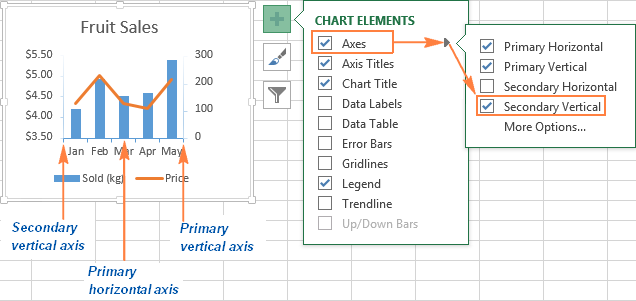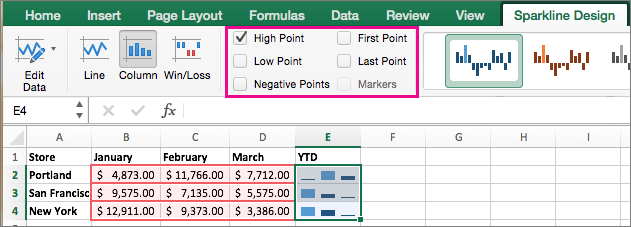

#Excel 2016 mac move vertical axis series
It would be nice to know where that data point falls on the x- and y-axes, so let’s look at one of the ways to do that: Plot XY Coordinates in Excel by Creating a New Series The intermediate green point on the line was interpolated from the available data. In the scatter chart below, the blue line represents the available data points. As an example, I’ll use the air temperature and density data that I used to demonstrate linear interpolation. Because the scale of the line chart's category axis can't be changed as much as the scale of the value axis that is used in the xy (scatter) chart, you might consider using an xy (scatter) chart instead of a line chart if you need to change the scaling of that axis or display it as a logarithmic scale.If you have a scatter plot and you want to highlight the position of a particular data point on the x- and y-axes, you can accomplish this in two different ways. This difference is an important factor in deciding which chart type to use. Tip XY (scatter) charts show values on both the category (x) axis and the value (y) axis, while line charts show values on only the value (y) axis.

Note This option overrides the Category X crosses at value. This effectively moves the category labels to the opposite side of the chart. To force the x-axis, cross the value axis at the highest value, and select the Category (X) axis crosses at maximum value check box.To specify the value at which the category (x) axis crosses the value (y) axis, type that value in the Category (X) axis crosses at box.Likewise, when you change the order of the categories from left to right, the value labels will flip from the left side to the right side of the chart.

Note When you change the order of the values on the value (y) axis from bottom to top, the category labels on the category (x) axis will flip from the bottom to the top of the chart.


 0 kommentar(er)
0 kommentar(er)
